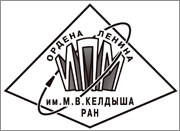|
This article is cited in 2 scientific papers (total in 2 papers)
Quantum-classical modeling of rhodopsin photoisomerization
A. S. Shigaev, T. B. Feldman, V. A. Nadtochenko, M. A. Ostrovsky, V. D. Lakhno
Abstract:
Characterization of the primary events involved in the cis-trans photoisomerization of the rhodopsin retinal chromophore was approximated by a minimum one-dimensional quantum-classical model. The developed mathematical model is identical to that obtained using conventional quantum classical approaches, and multiparametric quantum-chemical or molecular dynamics (MD) computations were not required. The quantum subsystem of the model includes three electronic states for rhodopsin: (i) the ground state, (ii) the excited state, and (iii) the primary photoproduct in the ground state. The resultant model is in perfect agreement with experimental data in terms of the quantum yield, the time required to reach the conical intersection and to complete the quantum evolution, the range of the characteristic low frequencies active within the primary events of the 11-cis retinal isomerization, and the coherent character of the photoreaction. An effective redistribution of excess energy between the vibration modes of rhodopsin was revealed by analysis of the dissipation process. The results confirm the validity of the minimal model, despite its one-dimensional character. The fundamental nature of the photoreaction was therefore demonstrated using a minimum mathematical model for the first time.
Keywords:
rhodopsin, retinal chromophore, cis-trans photoisomerization, quantum-classical model.
Citation:
A. S. Shigaev, T. B. Feldman, V. A. Nadtochenko, M. A. Ostrovsky, V. D. Lakhno, “Quantum-classical modeling of rhodopsin photoisomerization”, Keldysh Institute preprints, 2018, 027, 28 pp.
Linking options:
https://www.mathnet.ru/eng/ipmp2389 https://www.mathnet.ru/eng/ipmp/y2018/p27
|

|




 Contact us:
Contact us: Terms of Use
Terms of Use
 Registration to the website
Registration to the website Logotypes
Logotypes








 Citation in format
Citation in format 
